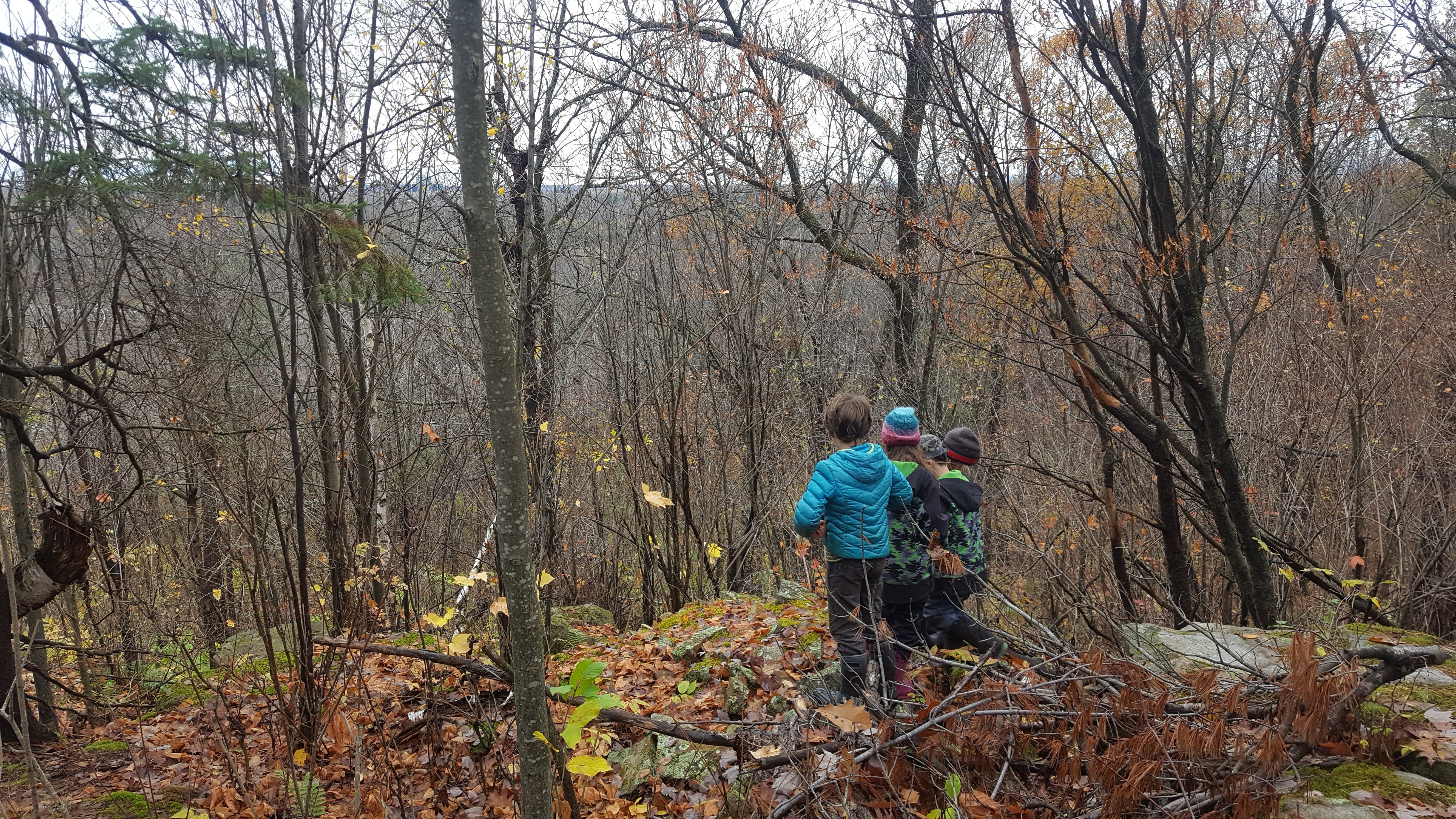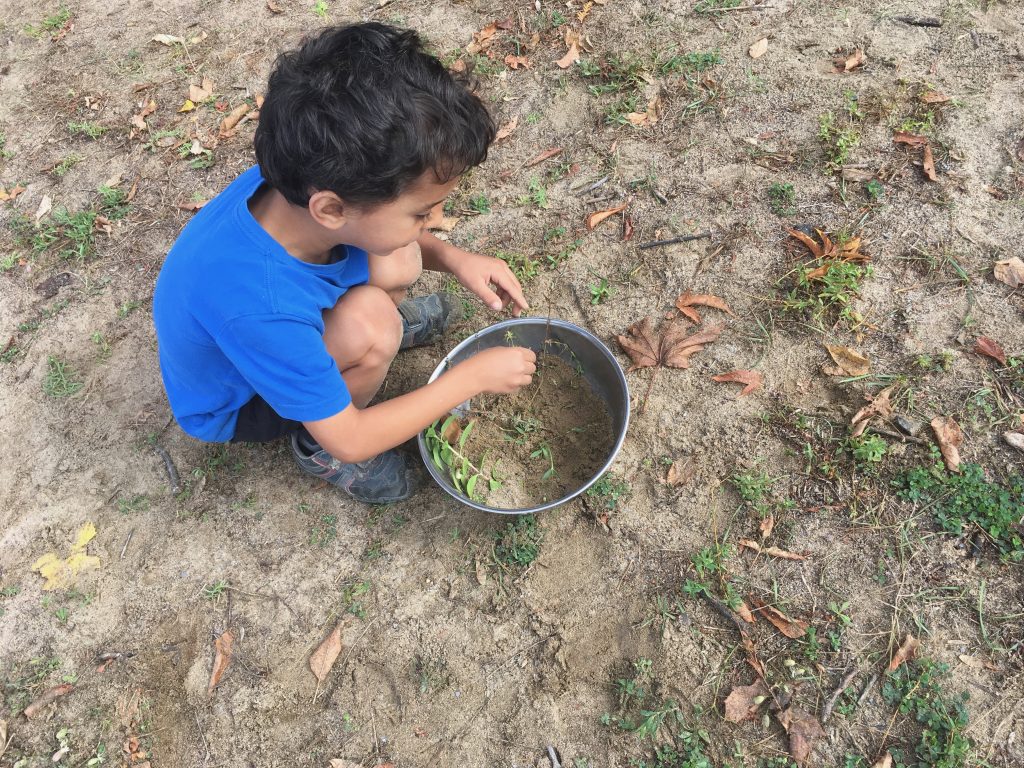
By Marlene Power, Executive Director of the Child and Nature Alliance of Canada
I have read two articles this past week, one CBC news article from a parent’s perspective on why they are sending their children to Forest School, and the second a blog post on why a program wished to stop calling themselves a Forest School. In the last decade I have had many discussions and debates on what a Forest School is, why it’s called this, who can call themselves a Forest School, what to do if someone is misrepresenting that term, and lastly, how to support QUALITY in an emerging outdoor play movement in education? I have learned many things from these conversations that I wish to share with you in response to these two readings.
First of all, I have learned that as a movement gains traction, or put more simply as ideas grow in popularity, there will always be critical debate. I welcome this, it means an idea is touching a nerve, and in my world that also means touching hearts. There will be naysayers and admirers, early adopters and later adopters, as well as people who excel at integrating new ideas into their practice and people who stumble along in their learning journey doing the same. I welcome all of this as well, for a movement to have reach, for every child in Canada to have the opportunity on a regular basis to get their boots muddy at daycare or school, we must grapple and grow. We must stumble, we must be curious, we must debate. There is no perfection or utopia here, Forest School is a messy place where messy ideas are practiced and played out.

The name Forest School came to me early in my own practice, after reading the term in Carl Honore’s book “Under Pressure”, when deciding to launch Carp Ridge Forest Preschool, and then again I debated this prior to launching Forest School Canada and the Ottawa Forest and Nature School. Already in Canada the terms outdoor school and nature school were being used within an already strong environmental and outdoor education sector. The ethos and pedagogy of Forest School was different than more traditional approaches, so at the time I felt it needed a new term. Over the first five years, many educators and scholars came together to define what we meant by Forest School, and as a result we published the Forest and Nature School Guide in 2014.
As a result, we collectively defined the term Forest and Nature School as an educational approach that supported regular and repeated connection to the land through play and child-directed learning, driven through a process of inquiry.

Forest and Nature School is led by a qualified educator or early childhood educator who is committed to this approach, and rooted in the principles of practice. Forest and Nature School can happen anywhere, children need very little, only a small patch of trees, a mud puddle, or ravine will do, to feel a deep and meaningful connection. At the Child and Nature Alliance [CNAC], along with many others, we talk about nature continuums, and have opted to have a very open concept of what nature can be. Lastly, we have learned that as educators start out doing this work, there is a learning curve, it takes time to learn how to share power with children. It takes time to learn how to balance the risks and benefits found outdoors and empower children to do the same. It takes time to deepen your understanding of inquiry and supporting a culture of curiosity where the educator is no longer the only voice or the expert. At CNAC, we also talk about meeting educators and parents where they’re at, and this is critical in order for a movement to thrive, for people to see themselves as a part of something important, for people to take a chance on change.

I am often asked what my thoughts are when people are using this term but have not done any professional learning to deeply understand the approach, or what if people are taking children outside but then talking at them and directing their experiences the whole time? It begs us to question, what is and what isn’t a Forest School? As stated, in Canada we have opted to take a broad definition of ‘forest and nature’ and quality play and learning can happen in multiple settings. What is most important is that the purpose, the magic stays at the forefront. It is this magic that helps us to define QUALITY practice in this work. This looks like the following:
- Children visiting the land over time in all seasons and weather, to build a reciprocal relationship with the land
- Educators who are deeply committed to the pedagogy and are able to create a supportive and enabling learning environment, and understand the nuances of how play propels learning
- Trust between educator and child, and a safe emotional space in which children feel they can be curious, play freely and take risks
- Educators who are supporting a balanced approach to risky play and knowledgeable about Risk Benefit Assessment in their settings
- Educators who are committed to access and equity with an understanding that all children deserve the opportunity to play and learn on the land. This is not a program for the privileged
- Programs are committed to Reconciliation, deepening their understanding of Canada’s history of colonialism, how the land was and continues to be stolen from Indigenous people, and how we integrate this knowledge in meaningful ways into our practice and into the lives of Canadian children
Over the last six years we have been expanding our professional learning model, through Forest School Canada, across the country. We have done so through the extensive efforts of our staff, national facilitation team, funders, as well as our partnerships with regional organizations, schools, early years centres, and Indigenous communities and organizations. Through them, we continue to learn and grow, to reflect and be curious, engage in dialogue, and then continue to learn and grow some more. With this mindset there is no room for blaming and shaming or presenting a one-size fits all or purest approach to Forest School. Learning and playing outdoors is messy, innovation and changing one’s practice can also be messy, but I can assure you that everyone is welcome in the forest.


Thank-you so much for this article. We have to also remember the pedagogy only lasts as long as the clients are there. So there has to be some input in what families are looking for as well. There is a real lack of financial support from government and we can only ask families to pay so much before we make forest education unaffordable for some families. It is a balancing act in drawing families in, maintaining financially viable numbers and following the forest school philosophy. I feel we have balanced it well but I look forward to the day we are recognized by the government and receive the same aid the that other early learning programs receive.
We grew up mostly outside all the time as children. It was great fun. Skinny, healthy and strong. You are on the right path. Many memories!